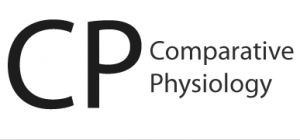Comparative Physiology @ Guelph
Reference Information for SC-C9 Cells from Kathy Green's Lab
Two cell lines have been included:
- A431 cell line expressing only the regulator plasmid (w/ G418 Resistance) called SS 68Q71 for the Single Stable cell line 68Q71.
- DPWT.GFP (called A431.F4) which was generated using the above SS 68Q71 line. This A431.F4 contains the regulator plasmid (G481 Res.) and the response plasmid (w/ puromycin resistance).
A431 inducible lines are maintained as subconfluent monolayers in DMEM media, 10% FBS, 1% penicillin/streptomycin, 400μg/ml G418 and 1μg/ml puromycin (of course single stables are NOT cultured in the presence of puromycin). Protein expression is induced by culturing the cell lines in the presence of 1-4μg/ml Doxycycline for 24h or longer. The cells proliferate very quickly and will need to be passaged every couple of days and it is best to keep them subconfluent (~80%). It is also best to passage at least one day before adding DOX to the media.
Please refer to the following web site for general details regarding the Tet-on system. The plasmid is actually pTREpuroR from the original vector series, not pTRE2 described in the pdf, but the same principles should apply. http://www.clontech.com/clontech/techinfo/manuals/PDF/PT3001-1.pdf
Here is a little blurb from that pdf to briefly explain the Tet-on system:
The Tet-On system is similar to the Tet-Off system, but the regulatory protein is based on a “reverse” Tet repressor (rTetR) which was created by four amino acid changes in TetR (Hillen & Berens, 1994; Gossen et al., 1995). The resulting protein, rtTA (reverse tTA), is encoded by the pTet-On regulator plasmid, which also contains a neomycin-resistance gene.
The second critical component is the response plasmid which expresses a gene of interest (Gene X) under control of the tetracycline-response element, or TRE. We provide two response vector series for the Tet Systems. Our original vector series-pTRE or its variants-contain the RE, which consists of seven direct repeats of a 42-bp sequence containing the tetO, located just upstream of the minimal CMV promoter (PminCMV).
PminCMV lacks the strong enhancer elements normally associated with the CMV immediate early promoter. Because these enhancer elements are missing, there is extremely low background expression of Gene X from the TRE in the absence of binding by the TetR domain of tTA or the rTetR domain of rtTA. Our second response vector series-pTRE-Tight-contain a modified TRE (TREmod) upstream of an altered minimal CMV promoter (PminCMVΔ), resulting in further reduced basal expression of Gene X. pTRETight can fully minimize background expression in certain cell lines, and is especially useful in cases where background expression is unacceptable, such as the expression of proteins that are extremely potent or toxic to the host cell (April 2003 Clontechniques). The ultimate goal in setting up a functional Tet System is creating a doublestable Tet cell line which contains both the regulatory and response plasmids. When cells contain both the regulatory (pTet-Off or pTet-On) and the response (e.g. pTRE-Gene X) Vectors, Gene X is only expressed upon binding of the tTA or rtTA protein to the TRE (Figure 2). In the Tet-Off System, tTA binds the TRE and activates transcription in the absence of Tc or Dox. In the Tet-On System, rtTA binds the TRE and activates transcription in the presence of Dox. In both Tet-On and Tet-Off Systems, transcription is turned on or off in response to Dox in a precise and dose-dependent manner.
